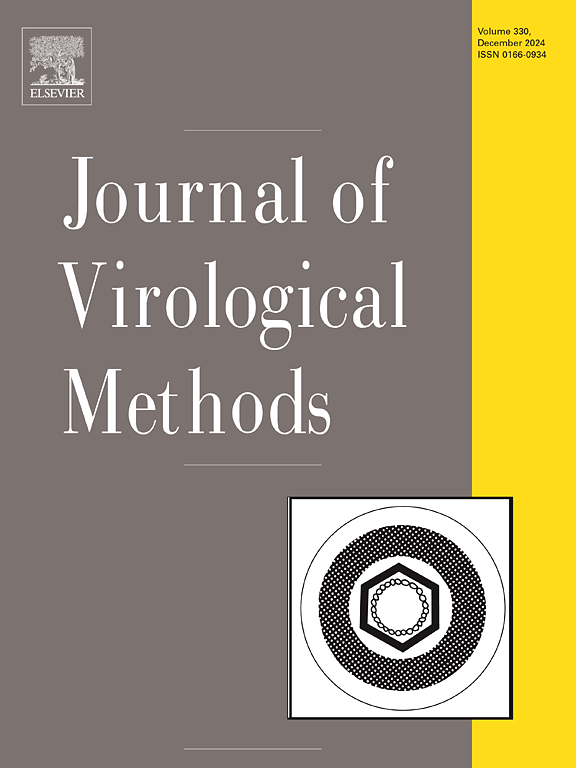Attenuation of viral replication foci in nuclei by 1,6 Hexanediol implicates phase separation in the assembly of baculoviral replication factories
IF 1.6
4区 医学
Q3 BIOCHEMICAL RESEARCH METHODS
引用次数: 0
Abstract
The assembly of replication factors into functional complexes is crucial for the initiation of viral genome replication and processing of nascent viral DNA. Binding to viral DNA and interaction of protein domains presumably guide compartmentalization of replication factors. The phase separation due to hydrophilicity and hydrophobicity of components may also contribute to the assembling process. However, phase separation effects are poorly investigated in the infection cycle of baculoviruses, large DNA viruses infecting Diptera, Hymenoptera, and Lepidoptera insects. Herein, we describe an investigation on a possible role of phase separation in the assembly of nuclear replication factories in Spodoptera frugiperda Sf9 cells infected with the Autographa californica multiple nucleopolyhedrovirus (AcMNPV). The inhibitory effect of 1,6-Hexanediol on the translocation of a viral DNA binding protein (DBP) to the replicative centers has revealed the involvement of liquid phases separation in the assembly of these centers. DBP is a structural component of the virogenic stroma, a sub-nuclear membrane-less compartment involved in viral DNA replication and the production of nucleocapsids. This sub-nuclear structure is presumably assembled via a biomolecular condensation mechanism.
1,6己二醇在细胞核中对病毒复制病灶的衰减与杆状病毒复制工厂组装中的相分离有关
复制因子组装成功能复合物对于病毒基因组复制的起始和新生病毒DNA的加工至关重要。与病毒DNA的结合和蛋白质结构域的相互作用可能指导复制因子的区隔化。由于组分的亲疏水性引起的相分离也有助于组装过程。然而,在杆状病毒、大DNA病毒感染双翅目、膜翅目和鳞翅目昆虫的感染周期中,相分离效应的研究很少。在此,我们研究了相分离在加利福尼亚自噬多核多角体病毒(AcMNPV)感染的狐尾蛾Sf9细胞中核复制工厂组装中的可能作用。1,6-己二醇对病毒DNA结合蛋白(DBP)向复制中心移位的抑制作用揭示了液相分离参与了这些中心的组装。DBP是致病毒基质的结构成分,是一种参与病毒DNA复制和核衣壳生成的亚核无膜腔室。这种亚核结构可能是通过生物分子缩合机制组装的。
本文章由计算机程序翻译,如有差异,请以英文原文为准。
求助全文
约1分钟内获得全文
求助全文
来源期刊
CiteScore
5.80
自引率
0.00%
发文量
209
审稿时长
41 days
期刊介绍:
The Journal of Virological Methods focuses on original, high quality research papers that describe novel and comprehensively tested methods which enhance human, animal, plant, bacterial or environmental virology and prions research and discovery.
The methods may include, but not limited to, the study of:
Viral components and morphology-
Virus isolation, propagation and development of viral vectors-
Viral pathogenesis, oncogenesis, vaccines and antivirals-
Virus replication, host-pathogen interactions and responses-
Virus transmission, prevention, control and treatment-
Viral metagenomics and virome-
Virus ecology, adaption and evolution-
Applied virology such as nanotechnology-
Viral diagnosis with novelty and comprehensive evaluation.
We seek articles, systematic reviews, meta-analyses and laboratory protocols that include comprehensive technical details with statistical confirmations that provide validations against current best practice, international standards or quality assurance programs and which advance knowledge in virology leading to improved medical, veterinary or agricultural practices and management.

 求助内容:
求助内容: 应助结果提醒方式:
应助结果提醒方式:


